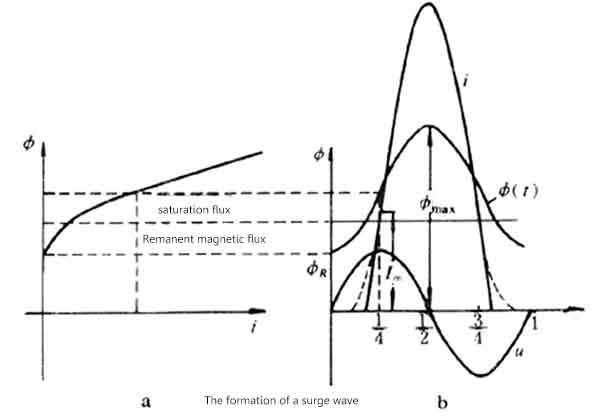What is the transformer excitation inrush current?
Transformer excitation inrush current, just listen to the name feels very complicated, it has another name "closing inrush current", is the transformer in the no-load closing moment, that is, just start to work or reconnect to the power supply, its winding suddenly produced a large current phenomenon. In popular terms, just like the high-power appliances in our homes (such as air conditioners) when starting, because the components such as coils and magnets inside the equipment need to quickly reach the working state, it will temporarily consume a lot of current. Transformer inrush current is a similar principle, but occurs in the core and winding of the transformer. This current is a special current phenomenon in the early stage of transformer operation.
Causes of transformer excitation inrush current
The residual flux is superimposed with the working flux
the transformer core itself is magnetic conductive, and there is a hysteresis property inside the core material, that is, under the action of alternating magnetic fields, the process of magnetization and demagnetization will occur in the core. Before the transformer is put into operation, there may be residual magnetic flux in its core.
What is residual flux?
When the transformer is put into operation, the magnetic flux generated by the operating voltage and the remaining magnetic flux in the core are in the same direction, and the two will be superimposed, resulting in the total magnetic flux far exceeding the saturated magnetic flux of the core.
Core saturation
If the total magnetic flux after stacking exceeds the maximum that the core can withstand (saturation magnetic flux), the core will be like "full" and cannot absorb any more magnetic flux. At this time, a very large current will be generated, that is, the excitation inrush current.
The size of the excitation inrush current is also related to the power supply voltage and the initial phase Angle of closing, the core flux value and the remanent direction before closing, the equivalent impedance value of the system and the phase Angle, the wiring mode of the transformer winding and the neutral point grounding mode, the magnetization characteristics and hysteresis characteristics of the core material, the core structure type, and the process assembly level.
The characteristics of transformer excitation inrush current
Large peak: the peak of the excitation inrush current can reach 6-8 times the rated current of the transformer, or even higher. This means that at the moment the transformer is turned on, it may experience a very large current shock.
Fast attenuation: Although the peak of the excitation inrush current is large, it will decay quickly. The attenuation time of a large capacity transformer may be as long as 5-10 seconds, while a small capacity transformer may only take about 0.2 seconds.
